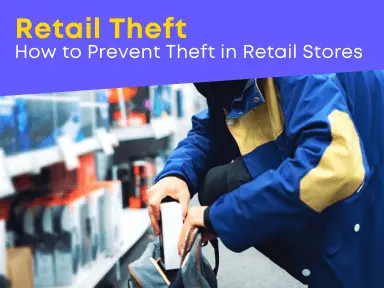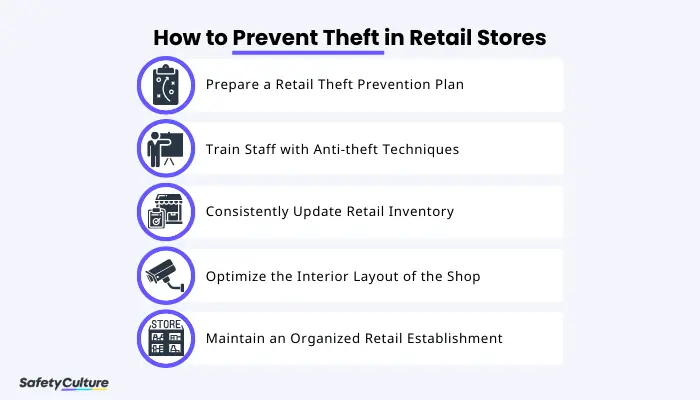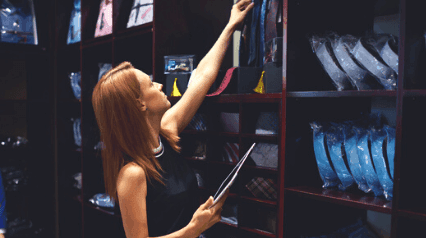What is Retail Theft?
Retail theft is the criminal act of willfully concealing or taking possession of merchandise without intending to pay for them, depriving retailers of their right to own the items on sale. Preventing retail theft has increasingly become a priority for store owners and retail managers. With the help of a real-time inspection and reporting tool, teams can work better together to prevent retail theft and improve the safety, security, and profitability of retail establishments.

Retail Theft | Examples of Preventive Measures
What is the Difference Between Retail Theft and Shoplifting?
In most instances, retail theft and shoplifting are almost always used interchangeably, but there are a few notable differences. While shoplifting generally applies to customers who steal goods from any open business, retail theft usually covers a wider range of theft crimes committed by both customers and employees. One such example of this type of retail theft is under-ringing.
In the US, retail theft or shoplifting is a violation of state law which can result in a misdemeanor offense, a criminal fine, or a jail sentence, depending on the value of the merchandise stolen, the gravity of the charges, and the statutes of the jurisdiction.
How to Prevent Theft in Retail Stores
A report by the Retail Industry Leaders Association (RILA) and the Buy Safe America Coalition found that US-based retailers lost nearly $70 billion worth of products in 2019 because of retail theft. While no business can be 100% theft-proof, retailers can be more proactive about preventing incidents of retail theft from occurring. Based on our research, here are 5 of the best ways to prevent theft in retail stores:

1. Prepare a Retail Theft Prevention Plan
Store owners and retail managers can be better prepared in case of potential theft in their shop by having a plan in place. It can provide basic procedures for implementing policy-related preventive measures like returns and refunds, bag checking, and employee scheduling. It can also outline a protocol that workers can follow when dealing with incidents of in-store theft such as detaining suspected shoplifters and getting the police involved.
2. Train Staff with Anti-theft Techniques
Store personnel play an important role to prevent theft in retail establishments, so it is crucial for them to be equipped with the right knowledge in engaging with customers and detecting suspicious behavior. Retail employees should familiarize themselves with common shoplifting tactics by being mindful of the cash registers and keeping an eye on the dressing room area. Training staff on crowd management, especially during peak seasons, and communication in retail services helps leverage on customer service skills as an effective deterrent to theft.
3. Consistently Update Retail Inventory
Periodically conducting physical counts on retail inventory makes it easier for shop owners to determine at-risk merchandise and secure them in locked cases. Moreover, updated inventories enable retail managers to execute visual merchandising accordingly, avoiding overstocked display shelves and reducing shrinkage. Not only can keeping track of inventory avert attempting shoplifters, but it can also deter workers from even considering employee theft.
4. Optimize the Interior Layout of the Shop
Preventing theft in retail establishments can happen by design. Some of the most common retail theft prevention methods for small businesses are to station customer checkouts near the entrance/exit, position mirrors and security cameras or CCTVs within the premises, and post signages about the consequences of theft. A study by the Loss Prevention Research Council (LPRC) revealed that over 50% of shoplifters indicated that they would either go to another store or not steal anything if surveillance signs were present in the area.
5. Maintain an Organized Retail Establishment
Messy stores can become thriving hotspots for theft because sales representatives will experience difficulty in identifying when items have already been stolen. Properly arranging and displaying products allows retail staff to easily notice missing quantities. One of the simplest ways store owners and retail managers can maintain an organized store is to regularly perform audits. Ensure that store operations keep running smoothly everyday using these checklists.
Training staff on proper safety procedures is also essential to maintaining an organized system. Using online courses that you can deploy across your team, you can be assured that everyone will be on the same page and knowledgeable about the proper safety and anti-theft procedures.
Digitize the way you Work
Empower your team with SafetyCulture to perform checks, train staff, report issues, and automate tasks with our digital platform.
Get Started for FreeRetail Theft Prevention Examples
Recently, the National Retail Federation (NRF) stated that organized retail crime (ORC) and violent incidents in particular are a growing threat to national retail security. Based on their survey, retail loss prevention professionals are looking to the future with continued investment in technology resources and people. Listed below are common examples of retail theft prevention devices retailers can use:
- Radio Frequency Identification (RFID) Tags: Also frequently referred to as electronic or security tags, clothing retailers use them in electronic article surveillance to easily track inventory. RFID tagging normally works by attaching a small sticker to the label or price tag of an item which can be deactivated upon purchase at the cash registers.
- Bluetooth-activated Padlocks: As a part of their standard security measures, large home improvement retailers lock up high-theft products such as top-of-the-line power tools. To strengthen their defenses against retail crime, they look into the latest lock technology such as Bluetooth activation, making the item useless until it is paid for.
- Real-time Inspection and Reporting Tool: Every year, this Fortune 500 retailer saves nearly $1 million USD after making the switch from paper checklists. With real-time audits done on mobile devices, they immediately see results and identify areas of improvement—elevating retail store safety and security from guest experiences to delivery processes, sales operations to compliance procedures.




